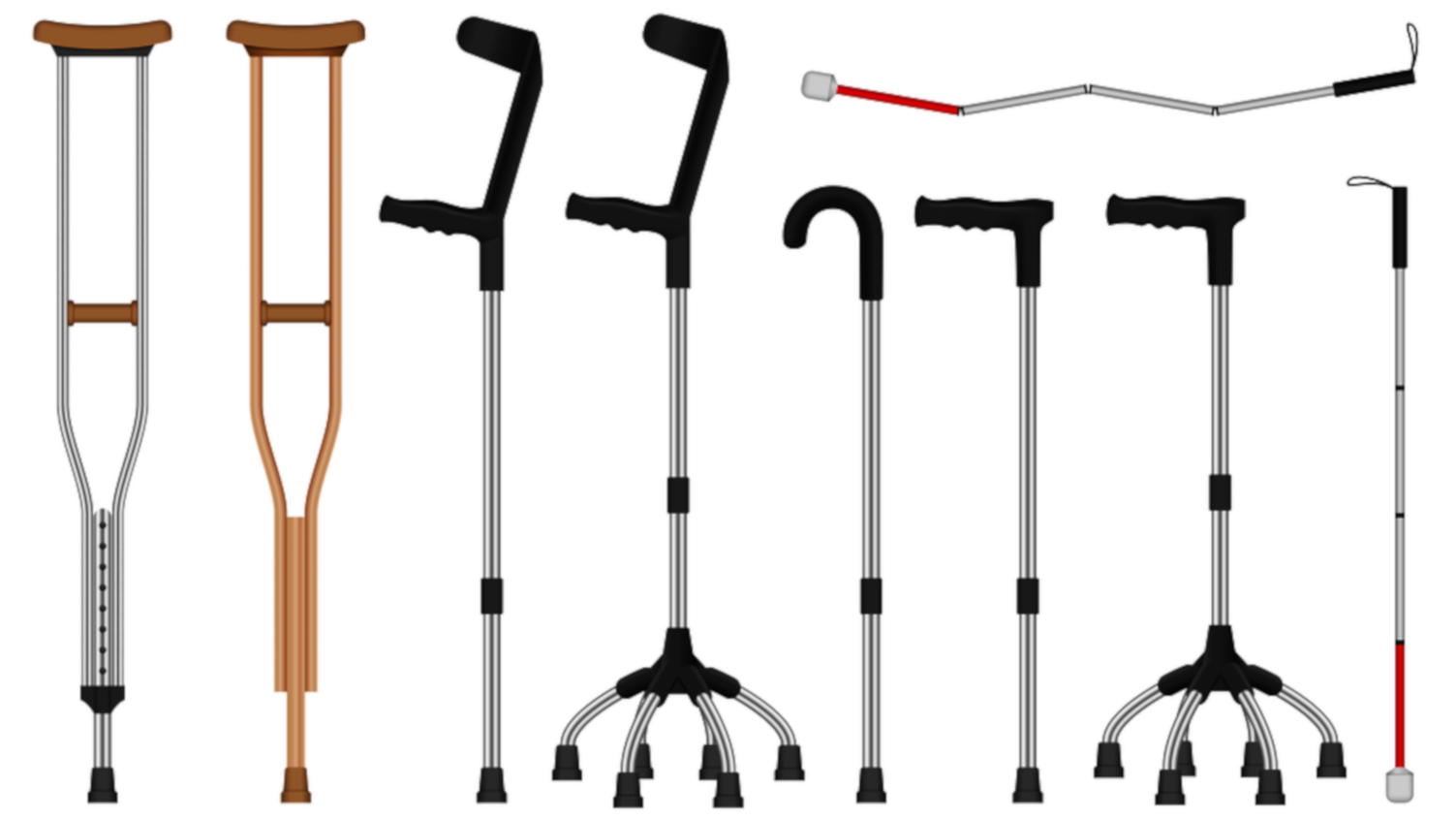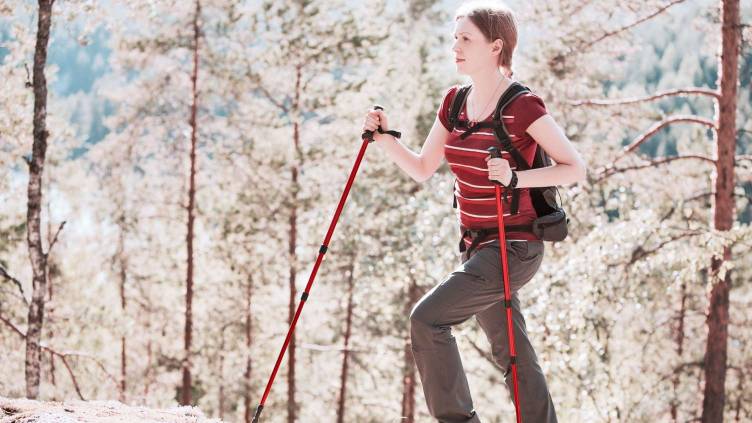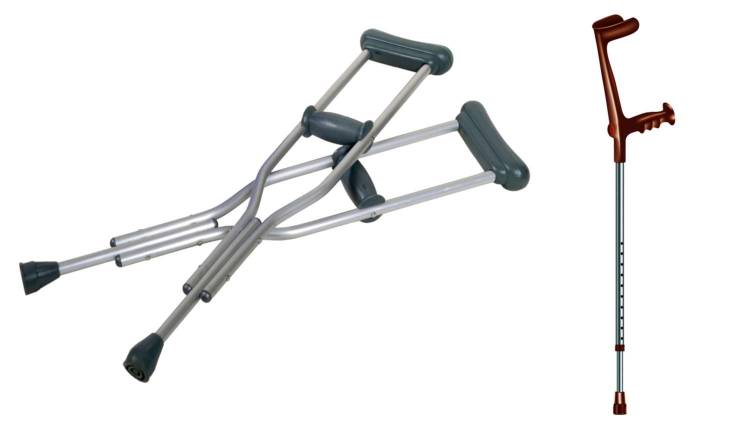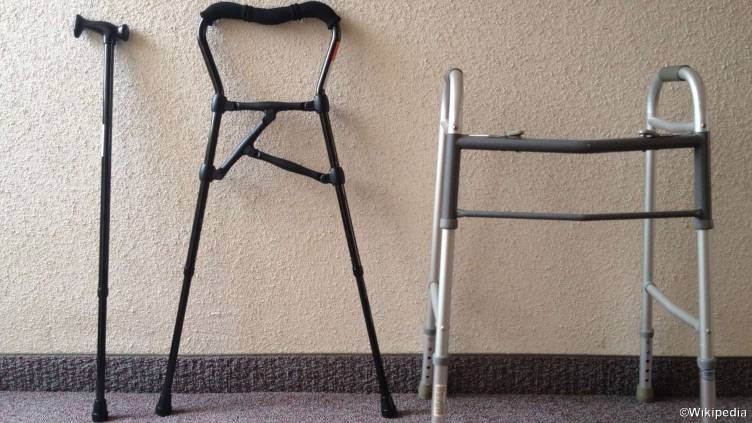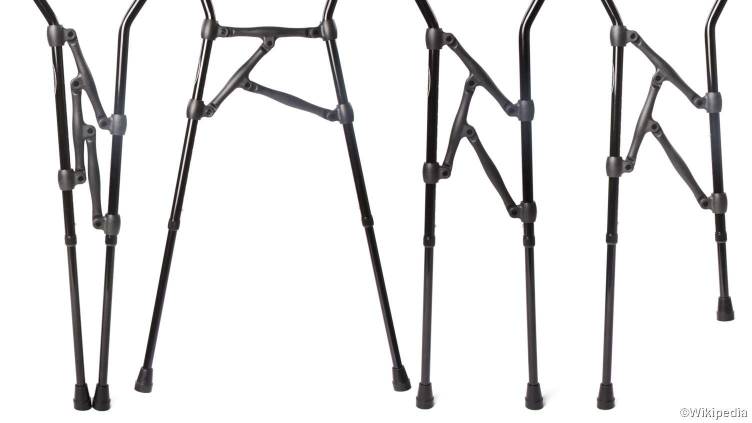Why do we need mobility aids? Walking aids for the elderly are hugely important because they remove the worry of falling which encourages seniors to walk. Walking is a fantastic exercise to keep the blood circulating and to improve the mood and reduce depression.
Some people have difficulties with walking because of age or damage to their body through accident or injury which means that they need constant support from others.
When there’s no one around they’ll have a hard time going upstairs and may even hurt themselves by losing balance.
The point is if you have trouble with walking independently, you’ll prefer a helpful companion such as a walking stick to help you walk with less pain and without having to rely on someone else.
In some cases, you may prefer to use a wheelchair to avoid using your legs altogether, either all the time or selectively depending on where you are going or what you are doing.
What Are The Different Types of Walking Aids?
There are many types of walking aids such as walking canes, walking cane hybrids, crutches and many other motorized or wheeled mobility aids.
Each of them may seem similar in a way but they all have different advantages and disadvantages depending on the user.
Walking Canes & Walking Sticks
Walking Sticks
A long time ago, walking sticks were just long pieces of wood carved beautifully in an ancient fashion. The Indians and Hunters are often seen with these.
Over the years, the meaning of walking sticks has been a little bit scattered. Some people call what others might call walking canes walking sticks and vice versa.
But it’s been used so much that walking sticks and walking canes are almost synonymous, they can be used interchangeably nowadays.
People still use these cut wood to help lessen a tiny bit of load and for many other uses such as moving things out of the path or even for self-defense at home and on the streets.
However, the walking sticks people use for hiking can also be called hiking poles and have been modernized especially for hiking.
So for the rest of this article, to avoid confusion, when I mention walking canes it could also mean supportive walking sticks or walking sticks specially made for support.
Walking Canes
Walking canes are typically made of wood (as the word cane suggests) that is made to provide support to give the elderly better walking experiences.
However, over the years, canes have been redesigned to the extreme in order to improve the support and the convenience of the walking aid.
There’ve been a lot of upgrades with the shape of handles, the material of the cane and the ferrules of the walking aid.
A cane can help if you have minor problems with balance or stability or weakness in your leg or trunk.
It is not recommended for people who have disabilities or major leg injuries as it can be uncomfortable for your back and hand if used constantly for too long even if used correctly.
A walking cane can provide a level of confidence against falling even if you can walk quite readily and are often used by walkers where the ground may not be level, providing a little extra stability.
Types of Walking Canes
Foldable walking canes
Like foldable walking canes, foldable walking canes have several joints that are internally connected with a rubber cord, allowing them to be folded to a shorter length when not being used.
Right-angled/T-shaped handles
These are typically more comfortable to hold than a crook handle, and the addition of a wrist strap could be useful when the stick is not in use.
Crook handles
These are typically less comfortable to hold than a right-angled handle, but you can easily hook it on your arm when it’s not being used.
Swan necked shafts
Handles with swan-necked shafts are more helpful if you require more stability. Because the offset above the stick allows your weight to be evenly spread over the base of the stick.
Contoured handles/Fischer sticks
These handles are shaped anatomically which spreads the pressure over a wider area of the palm, making the stick a lot more comfortable and increasing the appropriate duration of use.
Forearm canes
A forearm cane is similar to a regular cane but has additional support on your forearm, enabling more stability and load shifted from the wrist to the forearm.
Quad canes
Quad canes have four ferrules at the base, enabling them to stand freely, and offering a firmer base for standing.
Tripod canes
Tripod canes open in a tripod fashion with three support points to the ground. They are often available with an attached seat.
Adjustable canes
Adjustable canes feature two or more shaft pieces for a telescoping effect that allows the user to lengthen or shorten their walking cane to fit size. This feature can be combined with other variations.
White canes
White canes are specifically designed for assisting people who can’t see, these are longer and thinner and allow the user to feel the way in front of them.
They also alert others, that the user is blind and should be regarded with extra care and caution. In the UK, red banding on a white cane indicates a user that is both deaf and blind.
How tall should my cane be?
The handle of the cane should be equal to the height of your hip bone, which is the bump you feel on the side of your hip. This creates a proper bend in the elbow for the more efficient use of a cane.
Which hand do I use to hold my cane?
Which hand you use it in is just as important as the height of the cane. If you have an issue with your left leg, use the cane in the right hand and vice versa.
This makes sure that the force is applied correctly and helps maximize the efficiency of the cane, allowing you to use it comfortably for a longer time period.
Using the cane properly can also provide more support for you, you can also avoid more injuries as it is less likely to fall.
To do this, when you take a step with your affected leg, you move the cane forward about the same distance as one normal step.
Rest your weight on your unaffected leg and the cane. When you want to take a step with your “good” leg, transfer your body weight from your “good” leg to the cane.
Crutches
Crutches transfer weight from the legs to the upper body and are often used by people who cannot use their legs to support their weight, because of short-term injuries to lifelong disabilities.
Types of Crutches
Underarm crutch/axillary & Forearm crutch/ Lofstrand/ elbow/Canadian
Underarm crutches are the crutches that are high up to your underarms. They are mainly for walking on even surfaces, so they aren’t good for walking upstairs.
When fatigued, users like to be able to rest their body weight on the underarm pads. This is definitely NOT recommended.
Doing so may lead to other problems with your arms since your legs barely take any load at all while using underarm crutches.
Forearm crutches look a little similar to forearm canes but are a lot stronger. They are also much more maneuverable than the underarm crutches.
Forearm crutches require more upper body strength and more practice to master, but below are some techniques you can use. Try them all if you want, as you might like one more than all the others.
Crutch Techniques And Tips
One crutch
When you use one crutch, make sure the crutch is placed on the side of the unaffected leg as you would do with the cane from above.
Four-point gait
Those who can tolerate partial weight-bearing on both legs usually use the four-point gait. The sequence is: right crutch, left leg, left crutch, right leg.
This is the slowest of all gaits but also the safest since /three of the four points are in contact with the ground at all times.
Two-point gait
Those who can tolerate partial weight-bearing on both legs but require less support than a four-point gait usually use the two-point gait. The sequence is: right crutch with left leg and then left crutch with right leg.
Three-point gait & Swing-to gait
The three-point gait is usually used by those who cannot bear weight on one leg. Here’s the sequence: left crutch with right crutch(weight rests on the unaffected leg) and then the unaffected leg(weight rests on the left & right crutches).
The swing-to gait has the exact same sequence but instead of small steps, you can move your crutches forwards up to 18 inches and swing your body.
To do this, lift your unaffected leg while your crutches are in front, resting all your weight on the crutches and creating a swing motion.
As you can see, the affected leg never touches the ground making it a lot less likely to inflict pain.
Walker/Walking Frames
Another go-to walking aid would definitely be the walking frame or in the UK, the Zimmer frame. This walking aid offers the most stability of all the hand-held walking aids as it has up to 4 legs.
These sometimes come with 2 wheels in front and that changes the way to use it a little bit. However, Zimmer frames are the least maneuverable in this list because of its size.
The wheels make it easier to move the frame from point A to point B. Walking frames that have wheels also come with 2 gliders on the 2 legs behind.
This design allows you to glide the frame along the floor for a faster movement but a tiny bit harder use.
Walker Cane Hybrid
If you don’t know whether to get a cane or a frame then you might want to take this walking aid into consideration.
Like the walking frame, the walker cane hybrid provides lateral stability so there’s more stability than a cane but less than a walker.
The walker cane hybrid comes with many functions such as a one-hand use and a stair-climber. So you can walk up the stairs as a cane can but with more stability as it has 2 legs.
All in all, it is basically an in-between choice with the cane being max maneuverability and the walking frame being max stability, each of them at opposite ends.
Sources:
https://en.wikipedia.org/wiki/Walker_(mobility)
https://en.wikipedia.org/wiki/Crutch
https://en.wikipedia.org/wiki/Assistive_cane
https://en.wikipedia.org/wiki/Walking_stick
https://www.verywellhealth.com/walking-aids-2549752
Ian has a degree in Civil Engineering & ran a construction company for some years. He spent many years as a professional in the construction industry with his own surveying practice. He has designed many social housing projects in London as well as worked as an Arbitrator. Ian is interested in design and having just turned 60 is keen to share a wide and varied experience to help people his own age and older.

